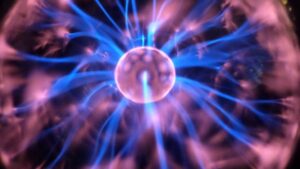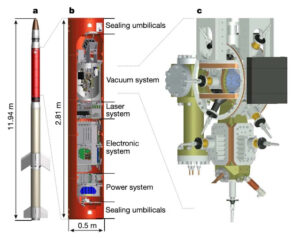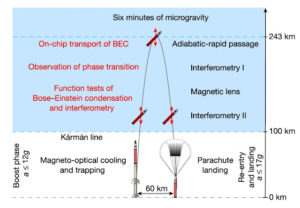In a ground-breaking experiment, scientists have successfully created the 5th form of matter for 6 minutes, known as the Bose-Einstein condensate (BEC).
Table of Contents

Watch it as a video instead of reading:
This major accomplishment has the potential to revolutionize our understanding of quantum mechanics and open the door to new technological advancements. In this article, we will explore the significance of this achievement, the nature of BECs, and the potential applications of this newfound knowledge.
Bose-Einstein condensate (BEC) is a unique state of matter, first predicted by Satyendra Nath Bose and Albert Einstein. It’s formed at extremely low temperatures when atoms slow down enough to overlap into a single quantum state, behaving as one large “superatom,” exhibiting fascinating quantum phenomena.
Mars Declared Unsafe For Humans: No one can survive for longer than four years
Understanding the Bose-Einstein Condensate
Before delving into the details of the experiment, it is essential to understand what a Bose-Einstein condensate is. In addition to the three common states of matter (solid, liquid, and gas), scientists recognize a fourth state called plasma, which occurs at extremely high temperatures. The Bose-Einstein condensate represents the fifth state of matter and occurs at temperatures close to absolute zero (-273.15°C or -459.67°F).

When atoms are cooled to such low temperatures, they lose their individual identities and start behaving as a single entity. This unique state of matter was first theorized by Albert Einstein and Indian physicist Satyendra Nath Bose in the early 20th century. However, it wasn’t until 1995 that scientists were able to create the first BEC in a laboratory setting.
5th form of matter for 6 minutes: Prolonging the Existence of BECs
The recent experiment that resulted in the creation of a BEC for six minutes is a significant milestone in the field of quantum physics. Previously, scientists have struggled to maintain the stability of BECs for more than a few seconds. During the experiment, researchers used a combination of magnetic fields and laser cooling techniques to cool rubidium atoms to extremely low temperatures, just a few billionths of a degree above absolute zero.

The extended duration of six minutes allowed the scientists to study the properties and behavior of BECs in more detail than ever before. This achievement has not only expanded our understanding of this elusive state of matter but also demonstrated the potential for further research and practical applications.
Potential Applications and Future Research
The successful creation of a stable Bose-Einstein condensate for an extended period can have far-reaching implications for various scientific and technological fields. Some potential applications of this breakthrough include:
Quantum Computing: BECs can be used to develop components for quantum computers, which have the potential to perform complex calculations at speeds far greater than conventional computers.

Superconductors: Research on BECs could contribute to the development of more efficient superconductors, which can conduct electricity without any resistance. This could lead to significant improvements in power transmission and electronics.
Precision Sensors: The unique properties of BECs make them ideal for creating highly sensitive sensors, which could be used in fields such as navigation, geophysics, and environmental monitoring.
Astrophysics: The study of BECs can provide valuable insights into the behavior of matter in extreme conditions, such as those found in the early universe, neutron stars, and black holes.
Conclusion
The creation of a Bose-Einstein condensate for six minutes signifies a remarkable achievement in the world of quantum physics. This accomplishment not only enhances our understanding of this extraordinary state of matter but also paves the way for numerous practical applications and further research. As scientists continue to investigate the properties and potential uses of BECs, we can expect to witness groundbreaking advancements that will shape the future of science and technology.
Reference(s): Research Paper


Is there a date for this or is it just a story?
Copy a link to the article entitled http://Scientists%20create%20the%205th%20form%20of%20matter%20for%206%20minutes
Share Scientists create the 5th form of matter for 6 minutes on Facebook
Share Scientists create the 5th form of matter for 6 minutes on Twitter
Share Scientists create the 5th form of matter for 6 minutes on LinkedIn
For six minutes, 150 miles above Kiruna, Sweden, on January 23, 2017,
Should have been unckuded.